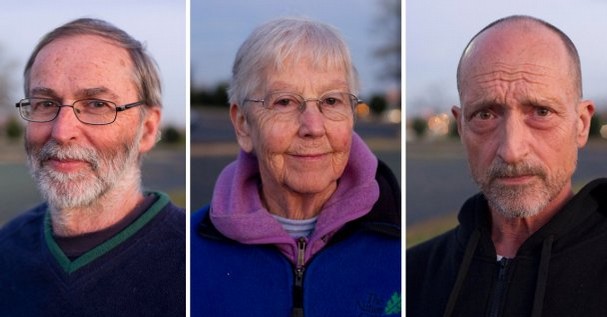Malama Mauna Kea – Stop TMT
Thursday, May 16th, 2013
Thirty Meter Telescope (TMT) Appeal!
PRESS RELEASE FOR IMMEDIATE RELEASE
CONTACT:
Ms. Kealoha Pisciotta
968-7660 or 443-4396
Mauna Kea advocates are seeking justice in Hawai‘i courts. Six plaintiffs representing community concerns have filed a Notice of Appeal in circuit court challenging the Board of Land and Natural Resources (BLNR) April 12th decision to grant the University of Hawai`i at Hilo a conservation district use permit (CDUA) to construct the world’s second largest telescope, the Thirty-Meter Telescope (TMT) atop Mauna Kea. The permit would allow the TMT Corporation to break ground and construct the eighteen story high TMT Observatory on undeveloped and pristine lands within the Mauna Kea conservation district. Plaintiffs include Mauna Kea Anaina Hou, KAHEA: The Hawaiian-Environmental Alliance, Deborah J. Ward, E. Kalani-Flores and B. Pualani Case of the Flores-Case Ohana, Clarence Kukauakahi Ching, and Kumu hula, Paul K. Neves.
Plaintiffs were pro se (they had no lawyer representing them during the contested case); now Mr. Richard Naiwieha Wurdeman a Native Hawaiian attorney based in Honolulu, will be representing them on appeal to the state circuit court.
Plaintiffs’ Notice of Appeal was filed Monday states that the BLNR
“The questions before the court, in short, are whether BLNR rules permit more development, and particularly development that has an adverse and significant impact on the land and waters of Mauna Kea”, said Ms. Pisciotta, President of Mauna Kea Anaina Hou, a Native Hawaiian Organization dedicated to protecting and preserving Native Hawaiian traditional and customary practices of Mauna Kea. “The UH itself admits that the TMT will have an adverse, significant and substantial impact on the cultural and natural resources of Mauna Kea. The BLNR rules are clear,” she said, “a development project may not have negative impacts on Mauna Kea—so the BLNR should have denied the permit—instead of approving it, and this is why we must seek justice in the courts.”
“We continue to educate Hawai`i’s people and the public abroad, that Mauna Kea is not just a high elevation place on earth, it is most sacred of places. Our case is about the necessity of having respect for Hawaiian spirituality…that spirituality is the cornerstone of the Hawaiian way. We cannot just speak of practice – we must continue to practice if we are to continue to exist” said Kumu hula Mr. Neves
Ms. Ward commented, “construction of a structure larger than all the others combined, in an open space area, where no other observatory exists today, will negatively affect the geology, the viewplanes, and the natural beauty, cultural, and recreational resources of Mauna Kea. The TMT project area, (including the Observatory site and Access Way), would destroy and disturb over 8.7 acres of Wekiu bug habitat, as well as kill Wekiu bugs in these areas. The loss, degradation, and reduction of Wekiu bug habitat on the summit of Mauna Kea is the result of astronomy development, and more development could lead to the introduction of new invasive species into the unique ecosystem. This not good for Hawai`i we hope the courts will help Mauna Kea.”
“It is unfortunate when public citizens are forced to go through court proceedings when developments such as the TMT Project are systematically granted permits by the BLNR despite these projects not meeting the criteria as outlined in Hawai`i State law.” stated E. Kalani Flores of the Flores-Case Ohana. “How can the proposed TMT Observatory that would be over 18-stories high and the TALLEST building on Hawai`i Island satisfy the criteria? It can’t! Thus, we must proceed ahead and be idle no more because Mauna a Wakea is still sacred, commented B. Pualani Case of the Flores-CaseOhana.



